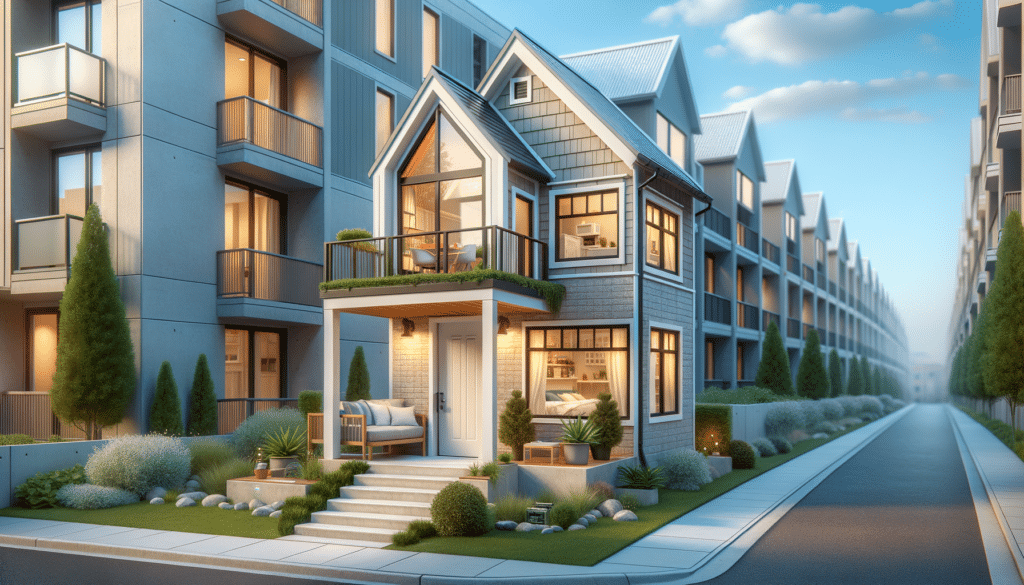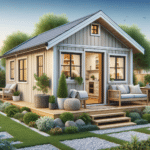Understanding ADUs: A Versatile Housing Solution
Accessory Dwelling Units (ADUs), commonly referred to as Granny Pods, are increasingly becoming a popular solution for housing needs across various demographics. These compact, self-contained living units are often built on the same property as a single-family home. They offer a flexible housing option that can serve multiple purposes, such as housing elderly family members, providing rental income, or serving as a private guest suite. The versatility of ADUs makes them a valuable addition to any property, offering both financial and practical benefits.
ADUs come in various forms, including detached units, garage conversions, and basement apartments. The design and functionality can be tailored to meet specific needs, such as accessibility features for elderly occupants or modern amenities for young professionals. The growing interest in ADUs is driven by the increasing demand for affordable housing and the desire for multigenerational living arrangements. By providing a separate yet accessible living space, ADUs promote independence while maintaining family connections.
The financial benefits of ADUs are significant. Homeowners can increase their property’s value and generate additional income through rentals. Moreover, ADUs can be a cost-effective alternative to traditional home expansions, often requiring less investment and time to construct. As housing markets continue to evolve, ADUs present a viable solution for addressing housing shortages and enhancing property utility.
Design and Features of Modern Granny Pods
Modern Granny Pods are designed with both functionality and comfort in mind, offering a range of features that cater to the needs of their occupants. These units are typically prefabricated, allowing for quicker and more efficient construction compared to traditional building methods. Prefabrication also ensures high-quality standards and reduces waste, making it an environmentally friendly option.
Granny Pods can be customized to include a variety of features, such as:
- Wheelchair accessibility with ramps and wide doorways.
- Safety features like grab bars, non-slip flooring, and emergency response systems.
- Energy-efficient appliances and sustainable building materials.
- Smart home technology for convenience and security.
These features not only enhance the living experience but also ensure the safety and well-being of the occupants. The interior design of Granny Pods can range from minimalist and modern to cozy and traditional, depending on personal preferences. The use of space is optimized to provide all the necessary amenities within a compact footprint, making these units both practical and comfortable.
The adaptability of Granny Pods allows them to fit seamlessly into various backyard settings, maintaining the aesthetic appeal of the main property. With careful planning and design, these units can be an attractive addition to any home, offering a harmonious blend of style and functionality.
Cost Considerations and Financial Benefits of ADUs
When considering the addition of an ADU to your property, it’s essential to evaluate the costs involved and the potential financial benefits. The cost of constructing a Granny Pod can vary significantly based on factors such as size, design complexity, and the inclusion of custom features. On average, the cost can range from $50,000 to $200,000, which is generally more affordable than traditional home additions or purchasing a new property.
Financing options for ADUs include home equity loans, personal loans, or refinancing existing mortgages. Some regions also offer incentives or grants for building ADUs, especially if they contribute to affordable housing solutions. It’s advisable to explore these options to determine the most cost-effective approach for your situation.
The financial benefits of ADUs extend beyond initial construction. By renting out the unit, homeowners can generate a steady stream of income that can offset the construction costs over time. Additionally, ADUs can significantly increase the overall value of the property, providing a long-term return on investment. For families, the ability to house elderly relatives or young adults in a separate yet close space can reduce living expenses and foster a supportive living environment.
In conclusion, ADUs present a practical and financially viable solution for modern housing challenges. By carefully considering the costs and benefits, homeowners can make informed decisions that enhance their property’s value and utility, while also meeting the evolving needs of their families.


